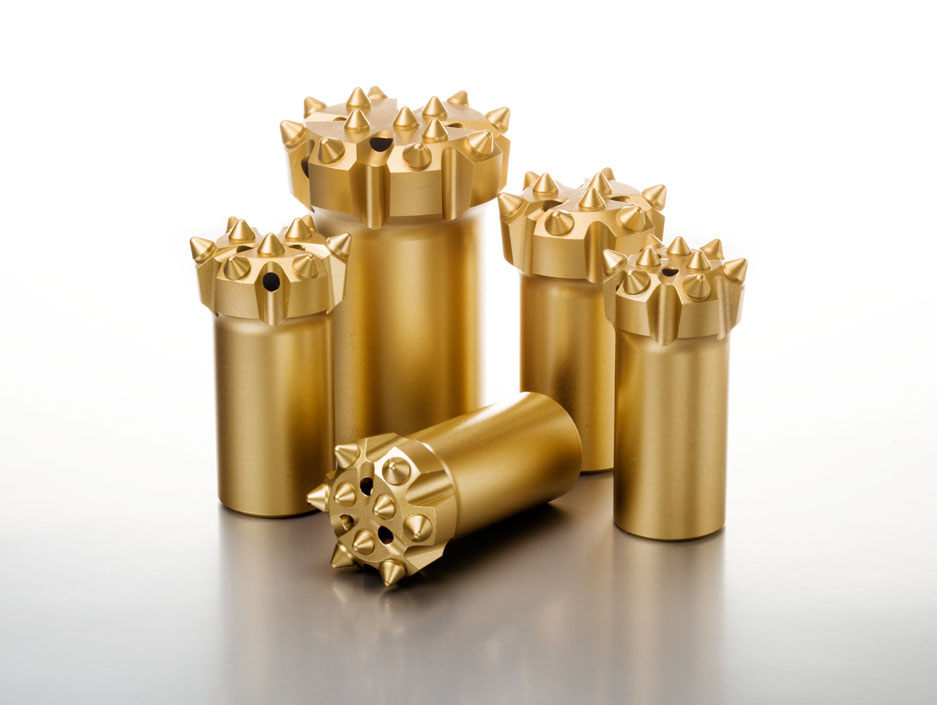Depending on the soil condition different drill bits are utilised. There are three main categories: soft, medium and hard formation bits. Soft formation rock bits are used in unconsolidated sands, clays, soft lime stones, red beds and shale, etc. Medium formation bits are used in calcites, dolomites, lime stones, and hard shale, while hard formation bits are used in hard shale, calcites, mudstones, cherty lime stones and hard and abrasive formations.
Historically there were two types of drill bits used in oil or natural gas drilling rigs, a drag bit, and a rock bit:
1. a drag bit is used for soft rocks, like sand and clay. The drill stem is rotated, and teeth on the bit shear the rock.
2. a rock bit (also called a roller cone bit) consists of teeth on wheels which turn as the drill stem is rotated. These teeth apply a crushing pressure to the rock, breaking it up into small pieces.
The original patent for the rotary rock bit was issued to Howard Hughes Sr. for his dual cone roller bit in 1909.
It consisted of two interlocking wheels. Walter Benona Sharp worked very closely with Hughes in developing the Rock Bit. The success of this bit led to the founding of the Sharp-Hughes Tool Company.
In 1933 two Hughes engineers invented the tricone bit. This bit has three wheels and is still the dominant bit in the market today. The Hughes patent for the tricone bit lasted until 1951, after which time other companies started making similar bits. However, the Hughes’s market share was still 40% of the worlds drill bit market in 2000.
In today's modern industry the two main types of drill bits are now classed as PDC (polycrystalline Diamond Compact) and Roller Cone; although the tri-cone dominates, bi-cone and mono cone bits do exist. Natural and synthetic diamonds are used in coring bits, as well as for very hard rock drilling with mud motors and turbines.
Drag bit type bits are used for mining and construction and also for oil and gas workover wells.
The technology of both bit types has advanced significantly to provide improved durability and rate of penetration of the rock. This has been driven by the economics of the industry, and by the change from the empirical approach of Hughes in the 1930s, to today's time domain Finite Element codes for both the hydraulic and cutter placement software.
In 2005 market shares were roughly 20% each for Hughes Christensen and Smith Bits, ReedHycalog with 37%, and the remainder of the market with Security-DBS, and smaller companies such as Varel, TSK,Focusrocbit, Walker-Mcdonald et al, Ulterra, and Lone Star Bit.(wiki)

Comments